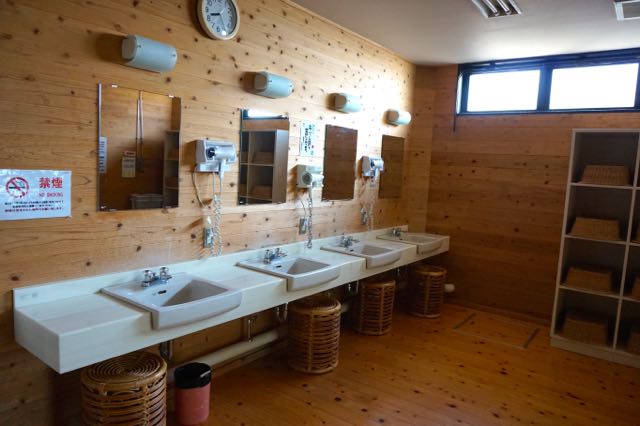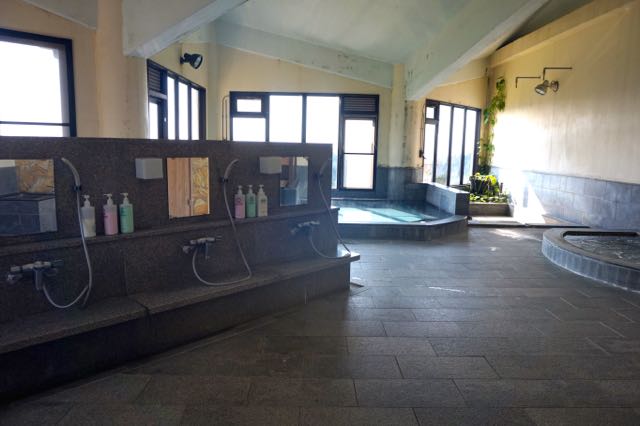Ryokan is a traditional Japanese style hotel or inn, with its own customs that guests must follow. These are mostly found in the countryside or small towns all over Japan. If you choose to stay at a ryokan, which may be your only choice of lodging in some locations, then you need to know few things beforehand.
Room Charge – Most ryokans charge per person, not by room. So you can get a single room and pay $100 or a shared room and pay $200. This is because the room charges include breakfast and dinner as well. Many hotels are small with 5-12 rooms, therefore during peak season, sharing is encouraged. Additionally, there is a bathing tax of 150 Yen per night per person, whether or not you use the bath during your stay. There is no tipping for bellboy or housekeeper.
Slippers – It takes a day or two getting use to the slipper change traditions of Japan. Just like entering a Japanese home, the hotel guest are requested to take off their shoes, and instead putting on slippers at the entrance. These are not to be worn in the bathroom or sleeping areas. When you enter your room, you will find a separate pair of slippers for the bathroom. Only bare feet and socks are allowed on the tatami areas where guests will sit and sleep on the floor.
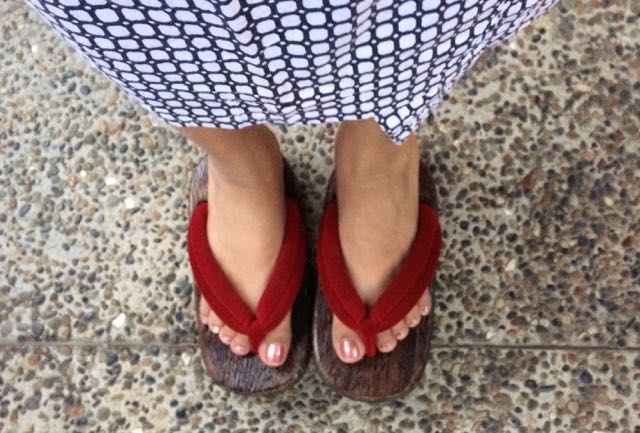
Observe your body. Its language also tells a lot to the subject of communication, and insecurity, communication problems create muscle clamps women seeking men uk – raised to the ears shoulders, lowered head, slouching and so on. Work with them, find and relax these areas.
Room – The floor of the major sections of the Japanese room is typically covered with tatami (Japanese floor mat). Japanese rooms are described for size according to the number of tatami. The usual sizes are 6, 8, 10, etc. During the day, the tatami section is used for a multipurpose way as a living and dining room, and at night, as a sleeping room.
It is funny to walk into one’s room for the first time and to see nothing but a table and low seats or cushions on the floor. There is a tv, phone, air conditioner,refrigerator and tea set, but you will find no bed in the room. Instead there will be thick padded blankets and mats called futons stored in the closet. You can layer the futons if you need additional padding. The pillow at Japanese inns is hard and beady, something westerners may not like. Bring your own pillow if you need extra comfort. Sometimes you will need to make your own bed, other times the chambermaid will make it while you are out for dinner.
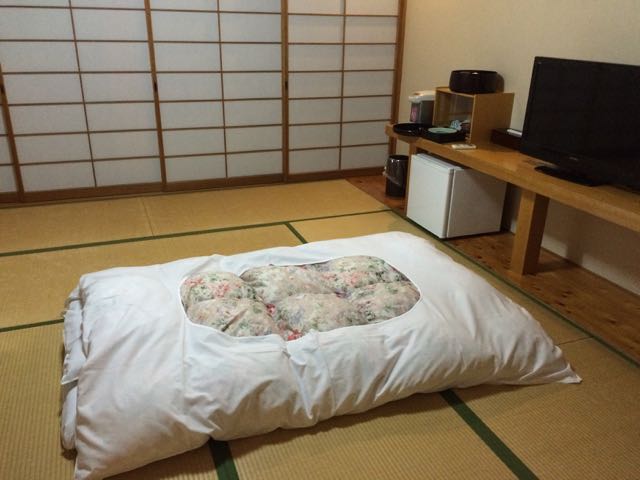
Yukata – Yukata is a light cotton kimono used at home for relaxation, and these days worn by young ladies at summer festivals. Yucatas are provided by the hotel for all guests to wear in the evenings. Both men and women wear yucata (gown) with belt, and tanzen (a padded jacket to wear over). Always, the left side of the yucata goes over the right. If you wear it incorrectly, a staff member will point it out to you.
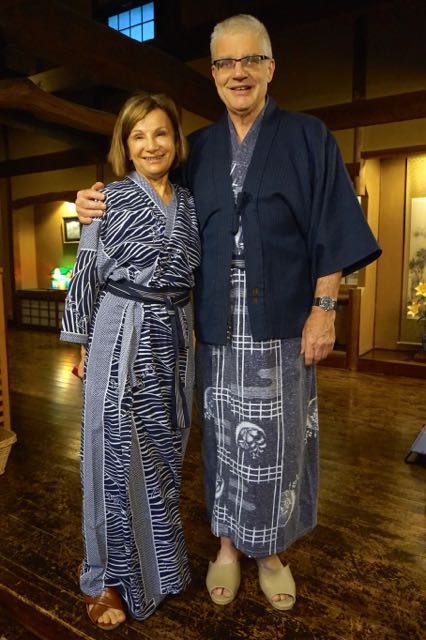
Baths – Very few hotels have private toilets or baths attached to the rooms. There are onsens – hot spring bath houses for the guests, and sometimes even locals for a charge. These are separated by men (look for blue flag) and women (red flag). When you enter the onsen, leave your slippers at the door. Individual bins are provided for clothes and personal items. You must go in the bathing area complete naked. No swimwear is allowed. Here you squat onto a low stool to bathe with a tumbler or shower. Once you are clean, you can soak in the hot springs (still naked) along with the other guests. Soap, shampoo and conditioner is provided. Hair dryers are available. Generally, the towels are very small washcloth size, so bring your own towel if you need a bigger one.
